
Until recently, measuring faint magnetic fields for distant galaxies was an exceedingly hard thing to do. Telescopes simply weren’t sensitive enough to register such faint signals. In 2011, though, the famous Very Large Array (VLA) radio observatory in New Mexico was updated and equipped with a new correlator (a new “brain,” more or less), plus new fiber optics and electronics. The renovations made it possible for the VLA to observe over a much wider portion of the radio part of the electromagnetic spectrum than before. As a result, astronomers have begun to probe the large gas halos surrounding galaxies. And they’ve detected – and begun to visualize – the vast magnetic fields stretching out far into these halos.
If you want to observe the elusive magnetic fields stretching out from galaxies, it’s not so practical to look at face-on galaxies, that is, galaxies we see from above or below their disk. The faint emission from the magnetic fields of face-on galaxies are drowned in the bright emissions the stars in from these galaxies’ disks. Instead it’s more practical to look at edge-on galaxies. When astronomers view a galaxy edge-on, they can more clearly see the faint halo above and below the galaxy’s flat disk. Then they can measure the special radio emission caused by the galaxy’s magnetic field.
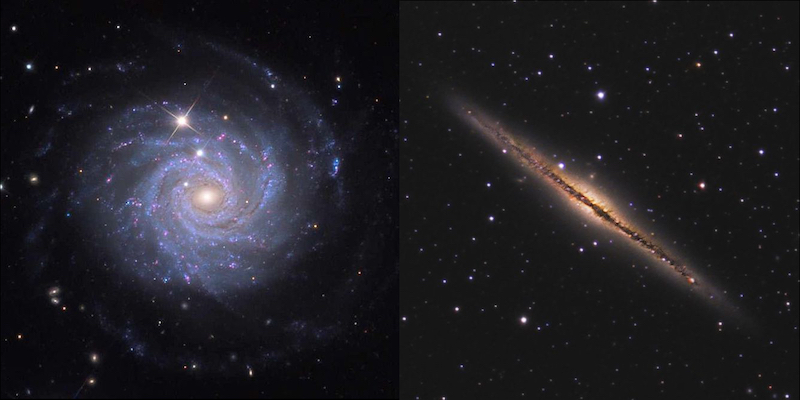
Look again at the image at the very top of this page. Galaxy NGC 5775 is an edge-on galaxy. It’s relatively near to us, as galaxies go, at 94 million light-years. That’s why the VLA managed to capture data that let us see this galaxy’s halo and its magnetic field in great detail. The radio image is superimposed onto an optical image from the Hubble Space Telescope of the galaxy’s flat disk. You can see pinkish bubbles of hot gas in the disk. These bubble are the birthplaces of cosmic rays that travel out as winds and help form the large halo of the galaxy, which is visible in the radio part of the electromagnetic spectrum and thus visible to the newly updated VLA.
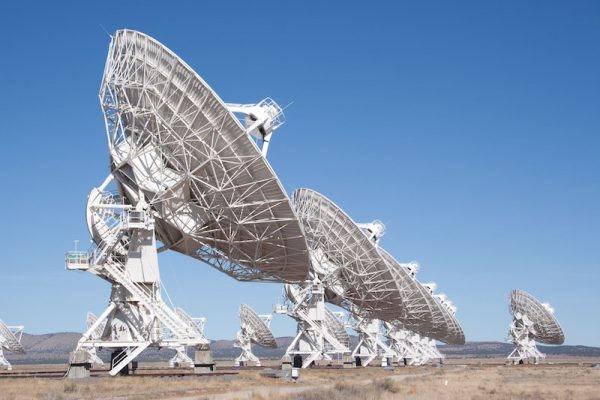
Some of the cosmic rays in NGC 5775 are caught by the magnetic field lines in the galaxy’s halo. Magnetic field lines show the direction of magnetic force: for example, if strong magnetic field lines were affecting an earthly compass, they’d be telling the needle of your compass which direction to point. That’s why a compass needle points northward.
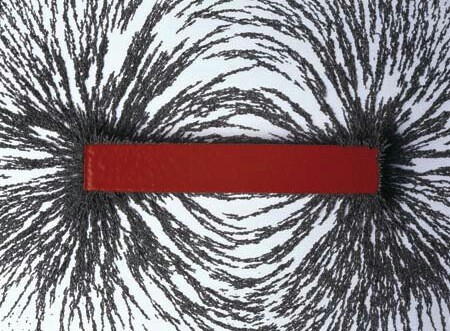
In the galaxy image at top, we see the magnetic field lines as “flow lines.” It’s from these lines of magnetic force that the radio emission flows, later to be picked up by the VLA. The field lines go out unexpectedly far, as far as 26,000 light-years from the disk of galaxy NGC 5775. That is a quarter of the size of the galaxy itself!
Notice that, in the images in this article, the flow lines of a galaxy’s magnetic field look a bit like the shimmering “curtains” of light sometimes seen in aurorae, or northern lights. Like the needle of your compass, aurorae are being led by lines of force in Earth’s magnetic field.
Other planets have aurorae, too; Jupiter has an incredibly strong magnetic field, 14 times stronger than the Earth’s!
In comparison, the magnetic fields found in galaxies are on the order of a million times weaker than the Earth’s. So you might see that it’s amazing we can detect such a thing from millions of light-years away.
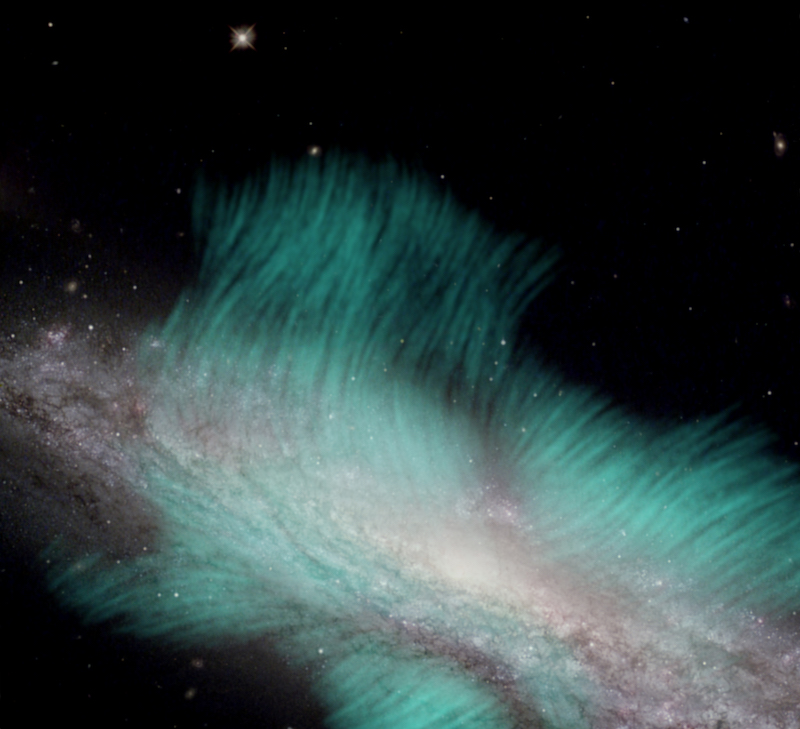
But what are a galaxy’s magnetic fields, really? How do astronomers measure them?
Normally, magnetism is visually invisible to us. The magnet on a toy car affecting another car in a kid’s train set can seem like magic (even to adults who think about it). We can’t see magnetism with our eyes. Yet the magnetic field of the Earth is pervasive in our lives, always surrounding us, strong enough to protect us from ionizing radiation from the sun, which otherwise would wreak havoc on our cells.
When an electron moves really fast, close to the speed of light, it’s called a cosmic ray. When a cosmic ray gets close to a magnetic field line in a galaxy, it will spiral around it and send out a special kind of radio emission called synchrotron emission. Using a radio telescope like the VLA, astronomers can measure this faint radiation and see how it is polarized – the synchrotron emission is a tracer of the magnetic field that caused it.
So astronomers know that where they find synchrotron emission in galaxies, there must also be magnetic fields present.
But there are a bunch of things we don’t yet know. How are a galaxy’s magnetic fields created, and how are they maintained?
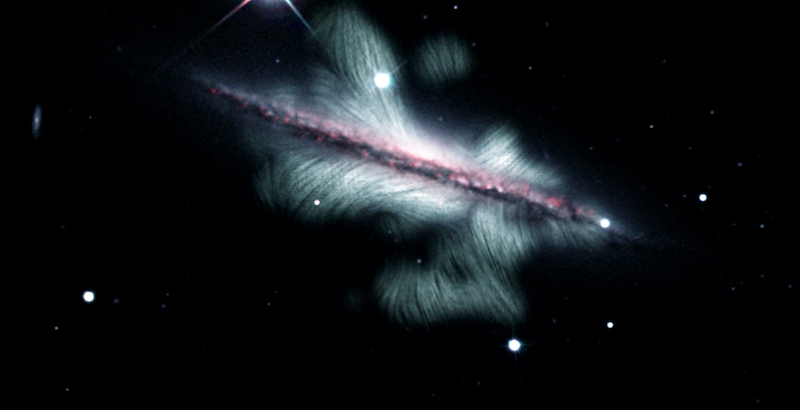
When their observations of the universe bring up questions, astronomers often sit down to find their answers via astrophysical theory. One popular theory that explains magnetic fields inside a galaxy’s disk is called a galactic dynamo . In short, the theory describes how an internal (to the galaxy) dynamo creates the magnetic field by a fluid-like motion – rotation and convection – in hot gas so that kinetic energy (energy due to motion) converts into magnetic energy.
A distant galaxy’s internal dynamo might be fuelled by supernova explosions. Rotational forces and motions might be at work to create a large, symmetric magnetic field. Meanwhile, other gas movements within the galaxy – for example, infalling gas – would create asymmetries within the field.
But remember what we said earlier about a galaxy’s magnetic field. It is seen to stretch far, far out into a galaxy’s surrounding halo. One thing that’s not known is how the magnetic field can be maintained, so far out into the halo. This is an area of current research and observation, now that instruments allow astronomers to detect and measure magnetic fields at these faint levels. Another, new, radio telescope that will be of even further help in this endeavor is the upcoming Square Kilometre Array.
By the way, our home galaxy, the Milky Way, also has a magnetic field. Recent research shows that the Milky Way’s magnetic field is twisting!

The images of galactic magnetic fields shown on this page are not photos, like the photo of the northern lights above. We can’t see the magnetic fields of galaxies by looking with our eyes.
Instead, astronomers need to do some special processing to retrieve the magnetic fields, by looking at the intensity and the polarizaion of the radio waves. Once you have the polarization, you know the direction of the magnetic field in different locations and can plot that in a map as arrows (vectors). Those kinds of maps aren’t very visually appealing though, so instead, the magnetic fields have here been brought forth in a new technique using a so called line convolution integral method. It allows the vectors to be smoothed with the image of the halo in a pattern showing exactly the same thing – the intensity and the direction of the magnetic field. Astronomer Jayanne English is a professor at the University of Manitoba and has either led or assisted in the development of all the images shown here. She engagingly explains how they are made here.
Bottom line: Until recently, magnetic fields in the outskirts of galaxies were too faint to observe. This article talks about why – and a bit about how – we can begin to view these vast fields now.











